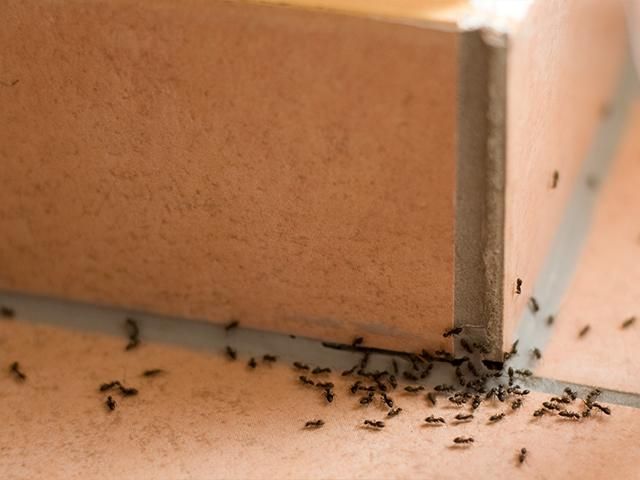It is a fact that ants are among the most common household pests. By clearly understanding the types of ants you might encounter in your home is considered to be very important for effective pest control Dandenong and prevention.
In this blog post, we are going to understand how to identify different types of ants. So let’s not wait any longer and jump right into it!
Common Ant Species Found in Homes
1. Argentine Ants (Linepithema humile)
Identification:
– Size: 2.2 to 2.8 mm long
– Color: Light to dark brown
– Shape: Uniform in color with a segmented body
– Antennae: 12 segments, no club
Behavior and Habitat:
Argentine ants are highly adaptable and form large colonies with multiple queens. They prefer moist environments and are often found near water sources in homes. These ants are known for forming wide trails and are aggressive toward other ant species.
Control:
– Sanitation: Keep food sealed and clean up spills promptly.
– Exclusion: Seal cracks and entry points around the home.
– Baits: Use ant baits to target the colony.
2. Carpenter Ants (Camponotus spp.)
Identification:
– Size: 6 to 12 mm long
– Color: Black, red, or a combination of both
– Shape: Large with a smooth, rounded thorax
– Antennae: 12 segments, no club
Behavior and Habitat:
Carpenter ants do not eat wood but excavate it to create nests, which can cause structural damage over time. They prefer damp or decaying wood and are often found in kitchens, bathrooms, and near windows.
Control:
– Inspection: Look for frass (sawdust-like material) near wood structures.
– Repair: Fix moisture problems and replace damaged wood.
– Baits and Treatments: Use ant baits and apply insecticidal dust in wall voids.
3. Odorous House Ants (Tapinoma sessile)
Identification:
– Size: 2.4 to 3.3 mm long
– Color: Brown to black
– Shape: Uniformly colored with a hidden node
– Antennae: 12 segments, no club
Behavior and Habitat:
Odorous house ants emit a strong, rotten coconut-like odor when crushed. They prefer sweet foods and can form large colonies with multiple queens. These ants nest in a variety of locations, including under floors, within walls, and outdoors.
Control:
– Sanitation: Keep food and sugary substances sealed.
– Exclusion: Seal entry points and eliminate moisture sources.
– Baits: Use sweet-based ant baits to attract and kill the colony.
4. Pavement Ants (Tetramorium caespitum)
Identification:
– Size: 2.5 to 3 mm long
– Color: Dark brown to blackish
– Shape: Parallel lines on the head and thorax
– Antennae: 12 segments with a three-segmented club
Behavior and Habitat:
Pavement ants typically nest under sidewalks, driveways, and building foundations. They forage for a variety of foods, including sweets, proteins, and greasy substances. Pavement ants can become a nuisance indoors, especially in kitchens and bathrooms.
Control:
– Sanitation: Maintain cleanliness and store food properly.
– Exclusion: Seal cracks in pavement and foundations.
– Baits: Use protein-based and sweet baits to attract and eliminate the colony.
5. Pharaoh Ants (Monomorium pharaonis)
Identification:
– Size: 1.5 to 2 mm long
– Color: Yellow to light brown
– Shape: Small with a distinctive two-segmented petiole
– Antennae: 12 segments with a three-segmented club
Behavior and Habitat:
Pharaoh ants are notorious for their ability to form extensive colonies with multiple queens. They prefer warm, humid environments and are often found in kitchens, bathrooms, and near heating systems. Pharaoh ants are challenging to control due to their tendency to scatter and form new colonies when disturbed.
Control:
– Baits: Use slow-acting baits specifically designed for pharaoh ants.
– Avoid Sprays: Do not use insecticidal sprays, as they can cause colonies to split.
– Sanitation: Keep areas clean and food sealed.
How to Identify Ants in Your Home
- Observe Physical Characteristics
When trying to identify ants in your home, start by observing their physical characteristics, including size, color, and body shape. Pay attention to specific features such as the number of segments in their antennae and the shape of their thorax and petiole.
- Note Their Behavior
Different ant species exhibit distinct behaviors, such as nesting preferences and food choices. Observe where the ants are foraging, what they are attracted to, and how they form trails. Behavioral patterns can provide important clues for identification.
- Inspect Nesting Sites
Identify potential nesting sites both indoors and outdoors. Ants can nest in various locations, including walls, floors, soil, and decaying wood. Finding and identifying nests can help you determine the type of ant you are dealing with.
- Use Identification Guides and Resources
Utilize online resources, field guides, and pest control professionals to assist with ant identification. Many websites and books offer detailed descriptions and images of common ant species, which can help you make accurate identifications.
Final Thoughts
There is no denying the fact that identifying and understanding the different types of ants is very important for effective pest management. This blog post can certainly help you with that.

